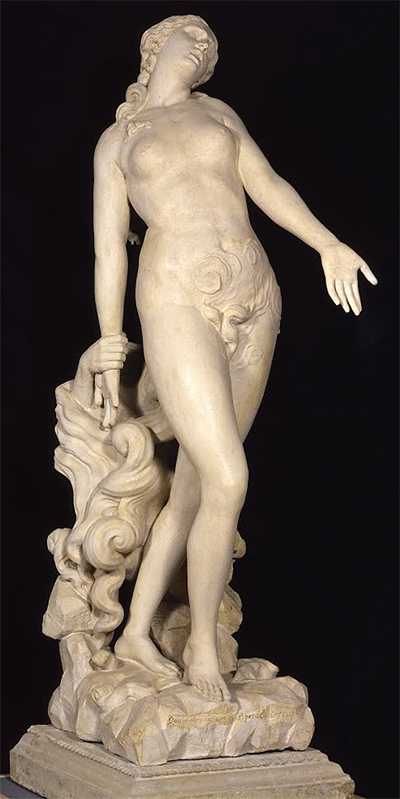The sculpture of Eurydice by Antonio Canova was sculpted in marble in 1776 and stands at 203cm in height. The ill-fated wife of Orpheus, Eurydice appears in Greek mythology as a character taken to Hades (the Underworld) after she dies from a snakebite.
Her husband is allowed to retrieve her, but only on the condition he does not look back until they are once again in the world of the living. Orpheus disobeys and Eurydice remains in the Underworld forever. One of the most famous stories in Greek mythology, Antonio Canova also sculpts Orpheus at the same time, keeping the two a pair artistically, despite their separation by death. The statues of Eurydice and Orpheus were made for Senator Giovanni Falier, later to decorate his garden in 1777 at the Villa Falier, Asolo.
Antonio Canova was a Venetian sculptor renowned for his sculptures in marble, all created in the Neoclassical style. He trained at the Accademia di Belle Arti di Venezia and was greatly inspired by the Baroque style of painting that was popular at the start of the 17th Century. He was also influenced by the Rococo style, an element of Baroque which pays homage to the extravagant and the theatrical. His sculptures of Eurydice and Orpheus were responsible for bringing Canova to prominence in the Venetian art scene. Before being used to stand ornately in the Villa Falier gardens, they were displayed in the Piazza di San Marco at the Feast of the Ascension. It had taken Canova almost two years to complete both statues, and he soon caught the eye of other wealthy Venetians who commissioned further projects from him, including more Greek mythological figures such as his work of Daedalus and Icarus for Procurator Pietro Vettor Pisani.
The sculpture of Eurydice shows her with her left hand extended, reaching for Orpheus who is leading her out of the Underworld. Her other hand is being pulled back into the fiery Hell of Hades, with the swirls and curves of the flames and the jagged edge of the path she stands on contrasting with the perfect smoothness of her skin. Her face is tilted to the sky, waiting to feel the sunlight, whilst her expression remains both calm and resigned to her fate. The sculpture of Eurydice is currently on display at the Museo Correr, Venice.




